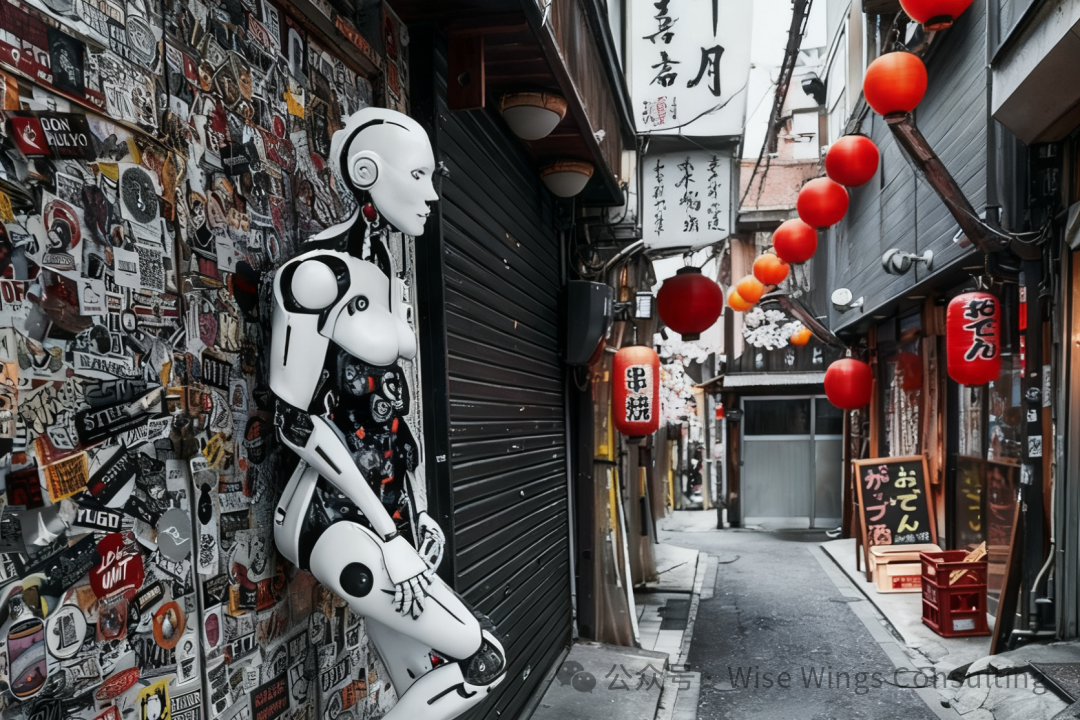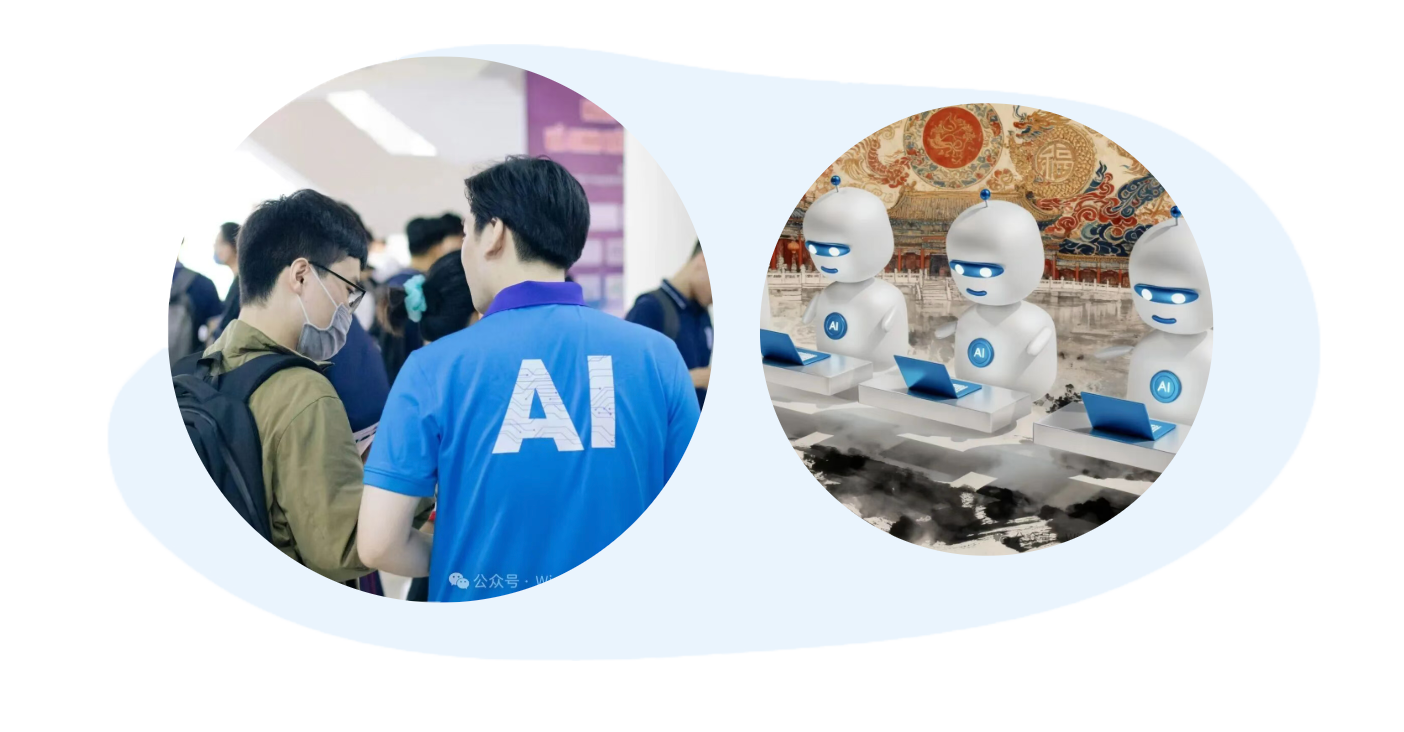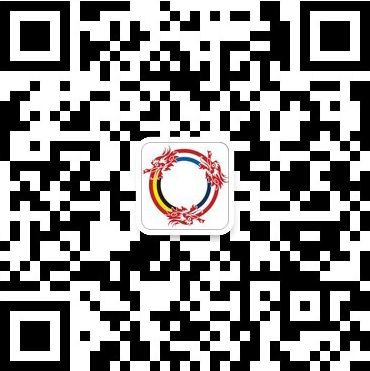Talent & Organization Development in the Age of AI

"Anxiety" and "Opportunity" in Human-Machine Collaboration
AI is rapidly reshaping the global workforce. In China, this change goes beyond just talent development; it's profoundly redefining how companies find, grow, and keep their best talent. The core question for leadership now is how to manage this shift effectively.
The Maimai Workplace Intelligence Report (2025) points to a clear problem: More than 60% of Chinese employees use AI for work, but only 28% of companies have a proper plan for future skills training. This gap creates a major challenge. AI helps us today, but the delay in preparing our people for new roles creates deep anxiety for tomorrow. This worry is not just about individuals losing skills; it is a big risk for companies that their organizational capabilities will no longer match what the AI era demands.
This article explores how Chinese enterprises can deeply integrate AI with Talent Development (TD) and Organization Development (OD) in the local market. We will analyze how companies, facing increased AI penetration, can apply a "people-centric design" philosophy to unlock employee creativity and potential, driving the organization's leap from simply "Intelligence-Driven" to truly "Human-Centric."

AI Automates Tasks Humans Unleash Creativity
AI's biggest impact is automating work. Accenture predicts that by 2027, about 40% of jobs in China will be redefined. This means repetitive, administrative work (like payroll or basic accounting) will be done less by people.
The real opportunity is liberation, not just replacement. By automating routine tasks, organizations can free their teams to focus on high-value work that demands complex judgment, emotional intelligence, and strategic innovation. New jobs like "AI Collaboration Manager" show the future needs human-machine collaboration.
The practical strategy here is "people-centric design." When CRRC (China Railway Rolling Stock Corporation) used AI for production, they didn't just cut jobs. They used OD tools like Group Coaching and job redesign to move workers from repetitive tasks to innovation and cross-team projects. The results were clear: employee satisfaction went up by 32%.
This shows that job change is not just about new tasks; it’s about unleashing individual potential and a sense of achievement. To make this work, companies must add tailored development plans (like 360-degree feedback) to their restructuring efforts. This is the strongest way to be people-centric in the age of AI.
Internal Mobility: Using OD to Power "Talent Circulation"
With competition high and skills changing fast, building a system for "talent internal circulation" is now a crucial strategy for Chinese companies to stay resilient.
The numbers are clear: The Beisen Report (2025) shows that companies with strong internal talent marketplaces see a 48% rise in retention and a 60% reduction in internal hiring time. Major players like ByteDance, Huawei, and Baosteel use AI platforms to accurately match people to new roles using skill data.
But a platform alone isn't enough. The risk is that internal moves become simple administrative "transfers" instead of real "growth." This is where OD (Organization Development) thinking becomes vital:
- Ensuring Real Growth: OD ensures that the move is an actual "Journey of Growth," not just a job change. This means checking that the new role aligns with the employee's career goals, company culture, and development needs.
- Strategic Focus: Internal mobility is a powerful tool for strategy. It allows the company to proactively move talent to high-demand areas like new energy or digital projects—especially critical under China’s "Dual Carbon" goals. This solves talent shortages and makes the organization stronger against market changes.
AI-Empowered Learning: Knowledge is Not Wisdom
AI is great at creating personalized learning paths based on data like performance and skills gaps. It gives many different people the training they need.
However, relying only on technology has a big drawback: The learning often becomes "fragmented" - a lot of small facts - without the bigger picture or deep human understanding. Employees might get many "knowledge points" but fail to turn that into "wisdom" and the ability to solve complex business problems.
The key is "human-machine collaboration." Companies like China Resources Group (CR) found that blending AI-recommended courses with human support (like coaching, peer discussions, and reflection journals) works best. This approach increased learning completion rates by 56% and boosted employee desire to learn by 41%.
As the CEIBS OD Research Center (2025) wisely notes, "AI can furnish knowledge; only humans can ignite wisdom." Real growth needs human factors like emotional connection and challenging ideas - elements that only human coaches and mentors can truly provide.
HR’s Leap: From Support Role to Strategic Engine
AI automating HR tasks is a double-edged sword: it means many HR responsibilities must change, but it also gives HR a golden chance to become a strategic partner.
The reality is that most HR teams are not there yet. The China HR Digital Maturity Model (2025) shows that only 18% of HR functions are currently seen as a "Strategic Partner." Most HR staff are still stuck in day-to-day administrative or "firefighter" roles.
The time AI saves must now be used for high-value strategic work:
- Design Organizational Capability: HR needs to become an "Organizational Designer." Use data analysis to predict the company’s talent needs for the next 3–5 years and create systematic (TD/OD) plans to fill those gaps.
- Drive Business Growth: HR should move from simply executing tasks to actively driving business success. This means joining high-level strategy talks, using talent data to guide key decisions, and shaping the company culture to fit new AI-era teamwork models. HR must become a core engine for growth.
Conclusion: The Cultural Choice
AI is rapidly redefining the rules of work. Yet, the core engine for any organization's growth and competitive leapfrog remains the people.
The real decision leaders face is this: Let AI handle the tasks, and let humans lead the direction. This is more than a technology choice; it's a strategic commitment to your organizational values and cultural belief.
In the coming decade, the success of Chinese companies won't just be about how much technology they use. It will depend entirely on their ability to truly uphold a "people-centric" management belief. Only by putting employee growth, well-being, and creativity at the heart of your strategy can you successfully move from being "Intelligence-Driven" to the powerful "Human-Centric" era.

